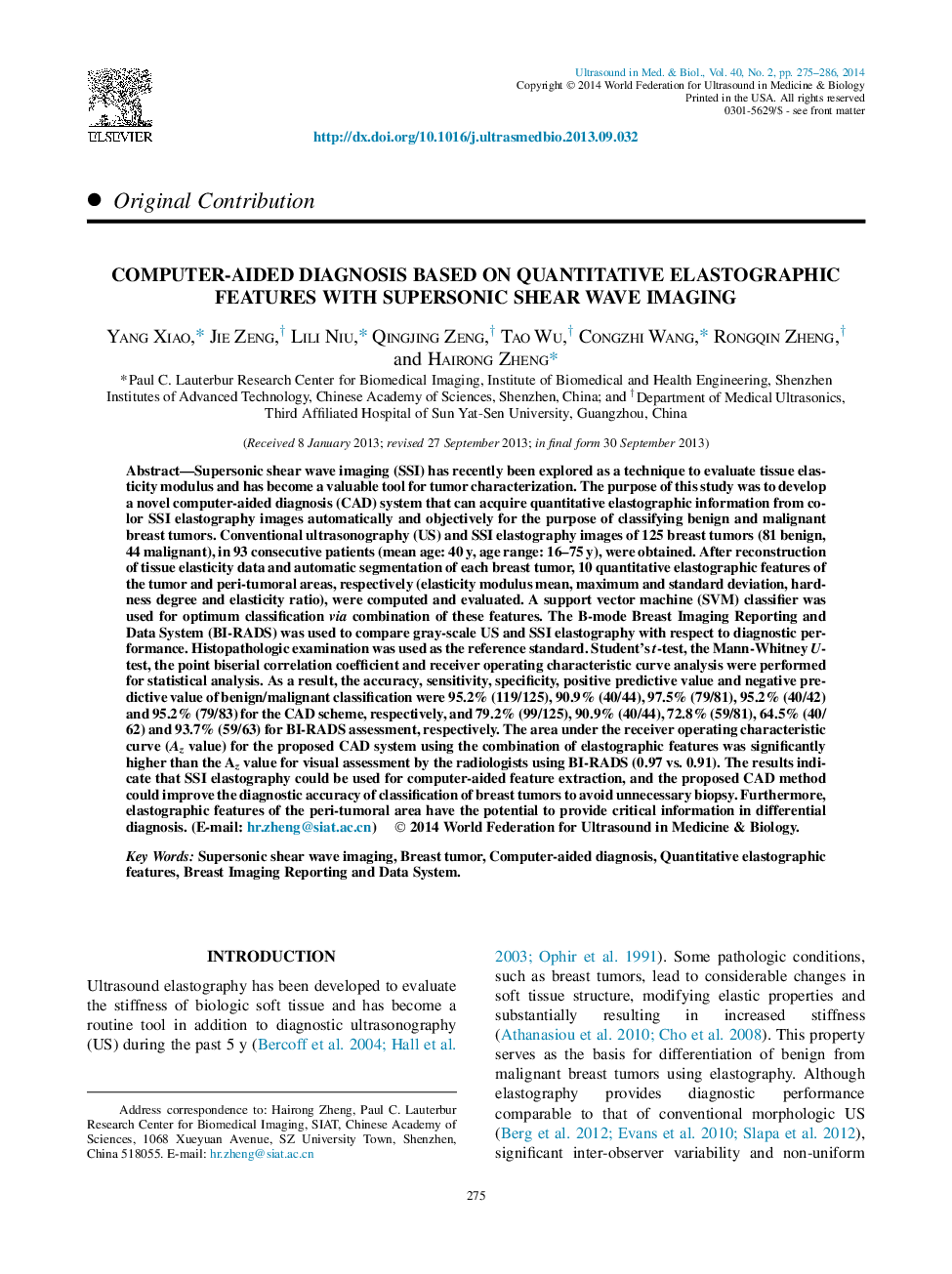| Article ID | Journal | Published Year | Pages | File Type |
|---|---|---|---|---|
| 1760539 | Ultrasound in Medicine & Biology | 2014 | 12 Pages |
Abstract
Supersonic shear wave imaging (SSI) has recently been explored as a technique to evaluate tissue elasticity modulus and has become a valuable tool for tumor characterization. The purpose of this study was to develop a novel computer-aided diagnosis (CAD) system that can acquire quantitative elastographic information from color SSI elastography images automatically and objectively for the purpose of classifying benign and malignant breast tumors. Conventional ultrasonography (US) and SSI elastography images of 125 breast tumors (81 benign, 44 malignant), in 93 consecutive patients (mean age: 40Â y, age range: 16-75Â y), were obtained. After reconstruction of tissue elasticity data and automatic segmentation of each breast tumor, 10 quantitative elastographic features of the tumor and peri-tumoral areas, respectively (elasticity modulus mean, maximum and standard deviation, hardness degree and elasticity ratio), were computed and evaluated. A support vector machine (SVM) classifier was used for optimum classification via combination of these features. The B-mode Breast Imaging Reporting and Data System (BI-RADS) was used to compare gray-scale US and SSI elastography with respect to diagnostic performance. Histopathologic examination was used as the reference standard. Student's t-test, the Mann-Whitney U-test, the point biserial correlation coefficient and receiver operating characteristic curve analysis were performed for statistical analysis. As a result, the accuracy, sensitivity, specificity, positive predictive value and negative predictive value of benign/malignant classification were 95.2% (119/125), 90.9% (40/44), 97.5% (79/81), 95.2% (40/42) and 95.2% (79/83) for the CAD scheme, respectively, and 79.2% (99/125), 90.9% (40/44), 72.8% (59/81), 64.5% (40/62) and 93.7% (59/63) for BI-RADS assessment, respectively. The area under the receiver operating characteristic curve (Az value) for the proposed CAD system using the combination of elastographic features was significantly higher than the Az value for visual assessment by the radiologists using BI-RADS (0.97 vs. 0.91). The results indicate that SSI elastography could be used for computer-aided feature extraction, and the proposed CAD method could improve the diagnostic accuracy of classification of breast tumors to avoid unnecessary biopsy. Furthermore, elastographic features of the peri-tumoral area have the potential to provide critical information in differential diagnosis.
Related Topics
Physical Sciences and Engineering
Physics and Astronomy
Acoustics and Ultrasonics
Authors
Yang Xiao, Jie Zeng, Lili Niu, Qingjing Zeng, Tao Wu, Congzhi Wang, Rongqin Zheng, Hairong Zheng,
